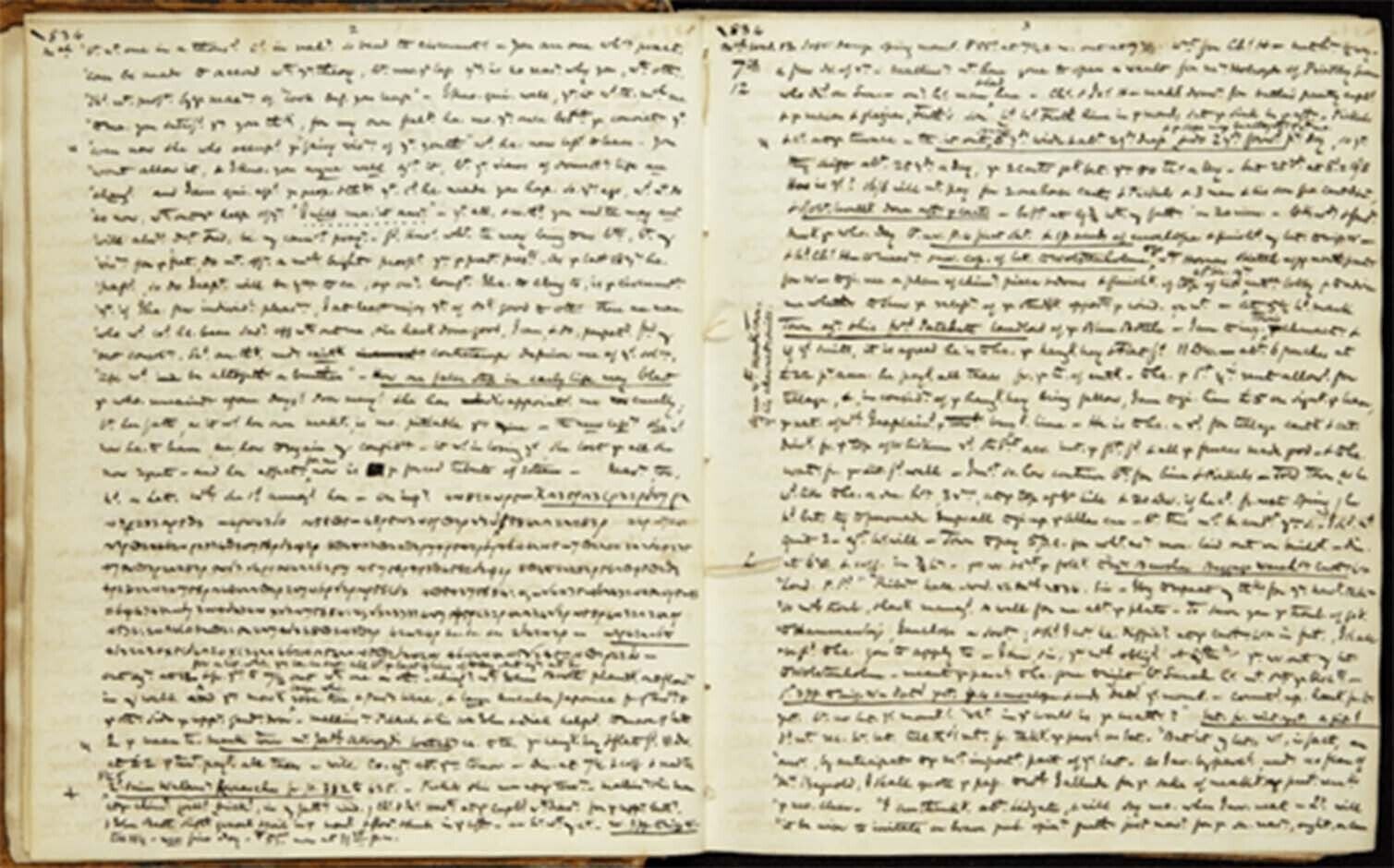Gentleman Jack: The diaries of Anne Lister
In this blog, we consider how the history of human sexuality and gender identity can be explored through the diaries of a historic lesbian figure, Anne Lister (1791-1840).
One of the personal stories documented in the recently-published Sex & Sexuality Module II: Self-Expression, Community and Identity is that of Anne Lister (1791-1840). Anne was a historical lesbian figure who has gained fame in popular culture as the protagonist of a successful BBC and HBO television series, Gentleman Jack.
A wealthy English landowner, Lister managed her family estate of Shibden Hall and kept extensive diaries throughout her life documenting her world travels, mountaineering achievements, and in code, her various relationships with women.
She filled 27 volumes within her lifetime, or around 7,700 pages/5 million words (for reference this is around 4 times more prolific than Samuel Pepys!).

Diary of Anne Lister, 10 Mar 1834 - 21 Mar 1835. Material sourced from West Yorkshire Archive Service. Further reproduction without permission is prohibited.
Lister was known as Gentleman Jack or Fred due to her masculine appearance and interest in business, not conforming to gender roles of the time. Approximately 1/6th of the diaries were written in a cypher of Lister's own devising, documenting accounts of her relationships with women and her most private inner thoughts about her gender identity.

Detail of coded section from diary of Anne Lister, 10 Mar 1834 - 21 Mar 1835. Material sourced from West Yorkshire Archive Service. Further reproduction without permission is prohibited.
After Anne’s death in 1840, her diaries remained at Shibden Hall until a descendant, John Lister, started publishing extracts from them in a local newspaper in 1887 as a historical document of daily life earlier in the century. Local interest in the diaries led to work on cracking Anne’s code and what they discovered was so dangerous in the climate of criminal prosecution of same-sex relationships of the time, that the diaries were hidden until John's death in 1933.
At this point, the estate was opened as a museum and all contents transferred to a local archive, where various researchers from the 1930s discovered the nature of the coded sections of Anne Lister's diaries, but confirmation of her sexuality was not public knowledge until the 1980s when transcripts started to be published.
These diaries are clearly an important historical document of the time they were created, giving us first-hand insight into the life of a woman who did not conform to gender or sexuality conventions of the early 19th Century.
But they can also be used as a lens to explore changing attitudes towards human sexuality in the two centuries since they were created and as a touchpoint to add context to other historical material we are including in the project; from the 1880-90s when the contents of the diaries were so dangerous that they had to be kept secret and hidden, we are also publishing contemporary records of criminal prosecution based on sexuality from the UK National Archives.
If we then move on to the mid-20th Century, when the diaries were preserved as a research source but knowledge of their content was restricted, we can contextualise this with other autobiographical accounts of same-sex relationships of which outside knowledge was still tightly controlled.
But then by the time we get to the late 20th Century when transcripts of the diaries started to be published, they can be seen in the context of the emerging Gay Pride movement which is documented in the many organisational records and collections of ephemera we have digitised.
This brings the diaries relevance right up to the present day when Anne Lister’s life can be celebrated in a mainstream TV show and published for the first time with Handwritten Text Recognition making her journals searchable and accessible to researchers all over the world, becoming part of current efforts to re-write the history of sexuality.
For more information about Sex & Sexuality, including pricing, please request a demo.
Recent posts

The blog highlights American Committee on Africa, module II's rich documentation of anti-apartheid activism, focusing on the National Peace Accord, global solidarity, and student-led divestment campaigns. It explores the pivotal role of universities, protests, and public education in pressuring institutions to divest from apartheid, shaping global attitudes toward social justice and reform.

This blog examines how primary sources can be used to trace the impact of young voices on society, particularly during pivotal voting reforms in the UK and the US. Explore materials that reveal insights into youth activism, intergenerational gaps, and societal perceptions, highlighting their interdisciplinary value for studying youth culture, activism, and girlhood across history.
